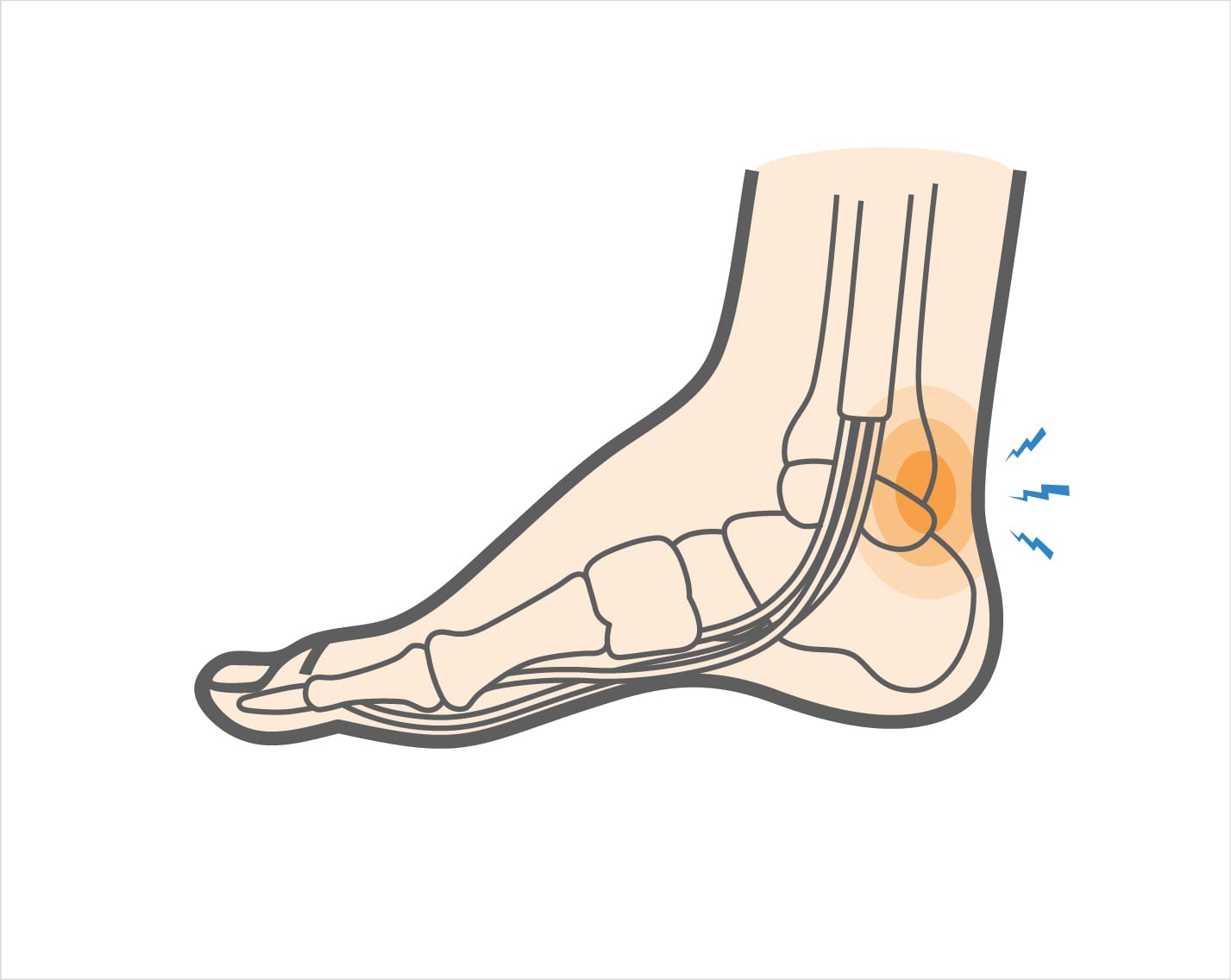Posterior ankle impingement is a condition that generates pain in the back of your ankle, especially during activities that require pointing your toes down. This condition happens when soft or bony tissue between the shin bone (tibia) and the heel bone (calcaneous) gets compressed. This causes inflammation and pain. Some people have a small bone (called the os trigonum) or a bony protuberance (Stieda process) in the back of their ankle. These bones can create friction in the ankle joint, causing this condition. Sometimes small pieces of bones can break off and get compressed.
Ankle Impingement (Posterior) Causes, Symptoms & Treatment
Posterior ankle impingement is a condition that generates pain in the back of your ankle, especially during activities that require pointing your toes down. This condition happens when soft or bony tissue between the shin bone (tibia) and the heel bone (calcaneous) gets compressed. This causes inflammation and pain.
Overview

What causes Ankle Impingement (Posterior)?
A common cause of posterior ankle impingement is chronic repetitive strain on the ankle due to playing sports or excessive training. Activities that require repetitive bending of the foot downward (plantar flexion) can contribute to this condition. Another cause of posterior ankle impingement is a trauma to the ankle that fractures small bones in the back of the ankle joint area.
Posterior ankle impingement is most common in these sports:
• Soccer
• Gymnastics
• Ballet/Dance
• Basketball
• Volleyball
Symptoms
Athletes with posterior ankle impingement usually feel sharp pain in the back of their ankle, especially when they are performing activities that require their ankle to bend downwards. This pain may be particularly evident when dancing, kicking a ball, or walking downhill. Common symptoms also include:
• Pain that recedes to a dull ache when resting
• Tenderness to touch at the back of the ankle
• Feeling of ankle instability
• Pain when wearing high heels
When to see a doctor
If you have symptoms associated with posterior ankle impingement, you should see your doctor for an expert diagnosis. Your doctor will ask questions about your injury, symptoms you’re experiencing, and the sports you play. A physical examination will be conducted to identify areas of tenderness and swelling. Imaging tests, such as an x-ray or magnetic resonance imaging (MRI) test are helpful in identifying excessive bone formation or other conditions which may be causing your symptoms.
Non-operative treatment
Treatment of posterior ankle impingement usually involves rest and avoiding activities that will aggravate your injury, such as dancing, kicking, running down hills, or jumping. Conservative treatments also include:
• Ice
• Elevation of the leg
• Compression
• Nonsteroidal anti-inflammatory drugs (NSAIDs), such as ibuprofen and naproxen, to relieve pain
• Corticosteroid injections for cases of severe inflammation
• Wearing a special ankle brace to support your ankle and protect it from re-injury
• Physical therapy exercises
Try these exercises to help address your condition:
Below is a PDF of the Exercise Program
Surgical Treatment
Surgery is not common for treating posterior ankle impingement, but may be recommended for severe cases, especially if they do not improve with conservative treatment. Surgery allows the removal of bone or scar tissue. There are risks to having surgery. These include removing too much bone and causing instability. Another risk is restoring motion to an arthritic joint, which may cause increased pain. Surgeons may recommend performing the surgery arthroscopically, using minimally invasive techniques. Your doctor and orthopedic surgeon can advise if surgery is the best treatment option for you.
Recovery
Recovery time after a posterior ankle impingement can vary widely and depends on the extent of the injury. Typically, it takes four to six weeks before athletes can get back to their normal activities. Recovery time can take longer for severe cases. Physical therapy will play an important role in an athlete’s recovery and return to play.
GET BACK TO WHAT YOU LOVE. FASTER
Sources
https://physioworks.com.au/injuries-conditions-1/posterior-ankle-impingement
https://www.podiatrytoday.com/when-patients-present-posterior-ankle-impingement
https://www.sciencedirect.com/science/article/pii/S1017995X1630284X
https://radiopaedia.org/articles/posterior-ankle-impingement-syndrome
https://www.moveforwardpt.com/symptomsconditionsdetail.aspx?cid=469c6b33-2ff9-469b-99ad-bb15df4f48be